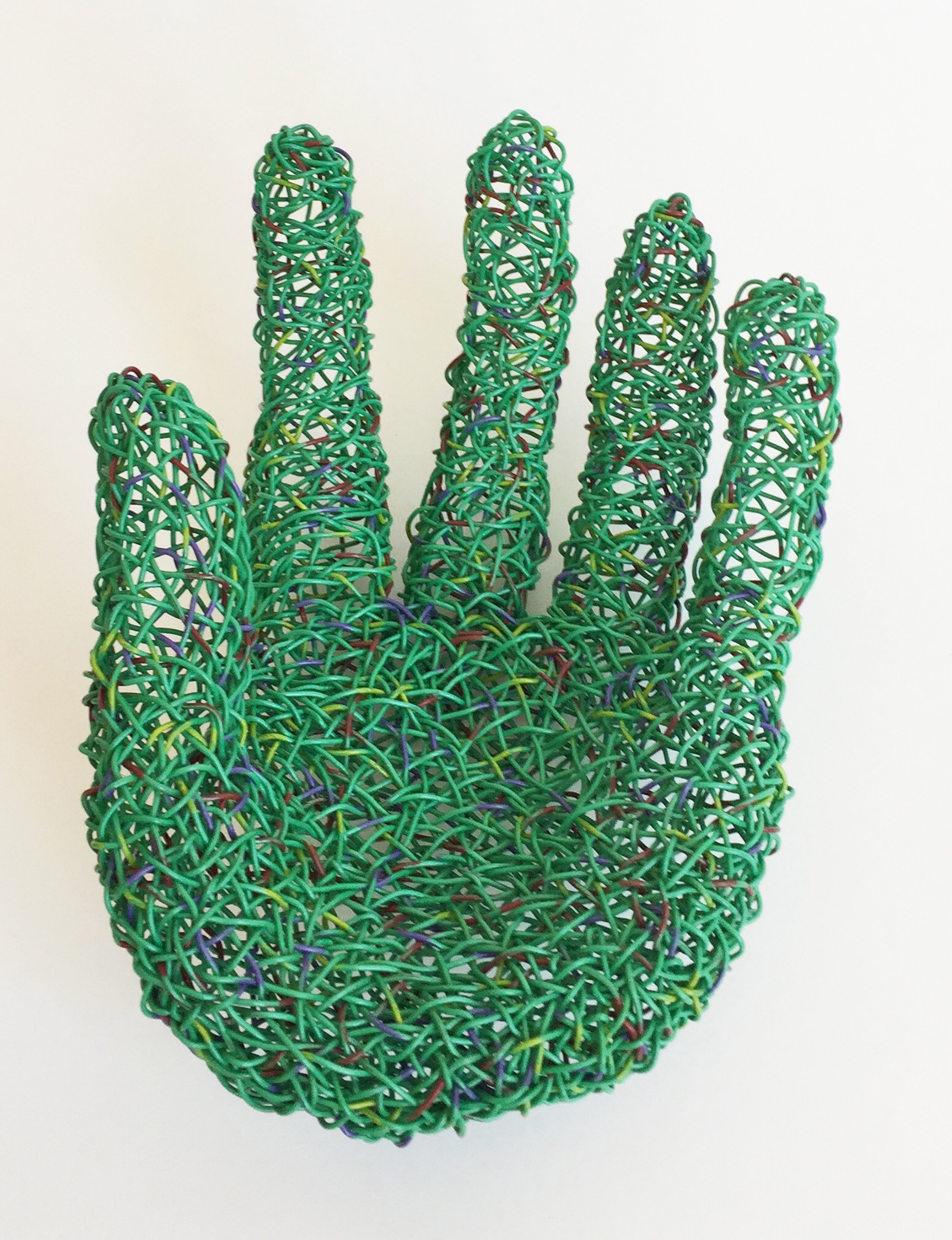Gyöngy Laky
Gyöngy Laky, Chance Encounter, 2009, walnut, paint, dowels, 12 x 62 x 2 inches. Photo: M. Lee Fatherree. Signed G.Laky, top of “T” on end of stick on left. Can also be installed vertically 80 x 11.5 x 2 inches. Originally commissioned for The Green Issue of The New York Times Magazine 4/20/2008 pp 45-72). $22,000
M Stark Gallery will present a solo show of Gyöngy Laky’s work April 13 - May 26, 2024, with a public opening reception Sunday, April 14, from 1-4 PM.
Join us for a walkthrough of the exhibition on Saturday, May 11 at 2:00 P.M.
Click here to read an essay about this exhibition by Lis Bensley, author of The Glimpse, set in the art world of 1950s Manhattan when abstract expressionism was at its apex.
Gyöngy Laky is known for taming the inherent irregularity of her organic raw materials into carefully shaped, often hard-edged compositions. Negative space is the co-star of her practice. During her lifetime she has created no less than six highly distinctive bodies of work: drawings in air, grids, vessels, words & letters, signs & symbols, installations, and (textile) abstractions. Her recent work is boldly political, and all her work is highly original.
Laky came to the US as a WWII refugee from Hungary and grew up in Carmel, fascinated by the counterculture of Big Sur just down the road. When she began her studies at UC Berkeley in 1967, no less than three urgent social movements raged. At Cal, she was indelibly marked by her wide range of study including close work with renowned textile artist Ed Rossbach and the Phoebe A. Hearst Museum of Anthropology’s collection of 8,000 baskets. There she experienced the revelation that the raw materials of textiles are living like “sinews, veins, and neurons.”
She made her first sculpture using vegetation prunings in 1968. A seminal trip to India in 1971 for postgraduate study inspired her to embrace her instinct for using common, discarded, and recycled materials. Over the course of her career, she has used twigs, orchard prunings, nails, miniature plastic toys, telephone wire, toothpicks, staples, screws, and a polyglot’s keen observation of the building blocks of language: letters, punctuation, and symbols. Signature techniques include painting the prunings with bright contrasting primary colors and adding thorns using nails or screws.
Laky is a scholar of the movement as well. She founded Fiberworks, the Center for the Textile Arts in Berkeley in 1973 (closed 1987) which offered accredited undergraduate and graduate programs. And she is professor emeritus at UC Davis where she taught for nearly 30 years.
Her monograph Gyöngy Laky: Screwing with Order, assembled art, actions and art practice, designed by browngrotta arts, Connecticut, browngrotta.com, was released by Arnoldsche Art Publishers, Germany, in August 2022 (328 pages). The book includes essays by Mija Riedel and David M. Roth with a foreword by Jim Melchert. Laky’s monograph documents her award-winning sculpture practice from the 1960s to present.
Gyöngy Laky, Family Tree, 2018, apple, acrylic paint, screws, plastic animals, 38 x 19 x 2.5 inches, $22,000
Gyöngy Laky, More Than A Thumb, 2018, telephone wire, ½ x 4½ x 6 inches, photo courtesy of the artist, $4,000
Gyöngy Laky, Laura’s Quilt, 2007, Apple, vinyl coated nails, 50.5 x 50.5 x 3 inches, photo by Ben Blackwell, $8,000
Gyöngy Laky, Field Notes, 2012, apricot, vinyl coated nails, 9 x 23 inches diameter, photo by M. Lee Fatherree, $11,000
Gyöngy Laky, Ancestor Tools, 2019, Ash branches, bronze, acrylic paint, masonry nails, 28 x 14 x 2 inches, collaboration with Shai Porath, $5,000
Gyöngy Laky, Fence Piece, 1985, prunings. plastic and cloth tape, telephone wire, 14 x 28 x 3 inches, $6,000
Gyöngy Laky, Climate Fugue 21, 2019, ash branches, acrylic paint, 10 x 65 x 2 inches, $16,000







